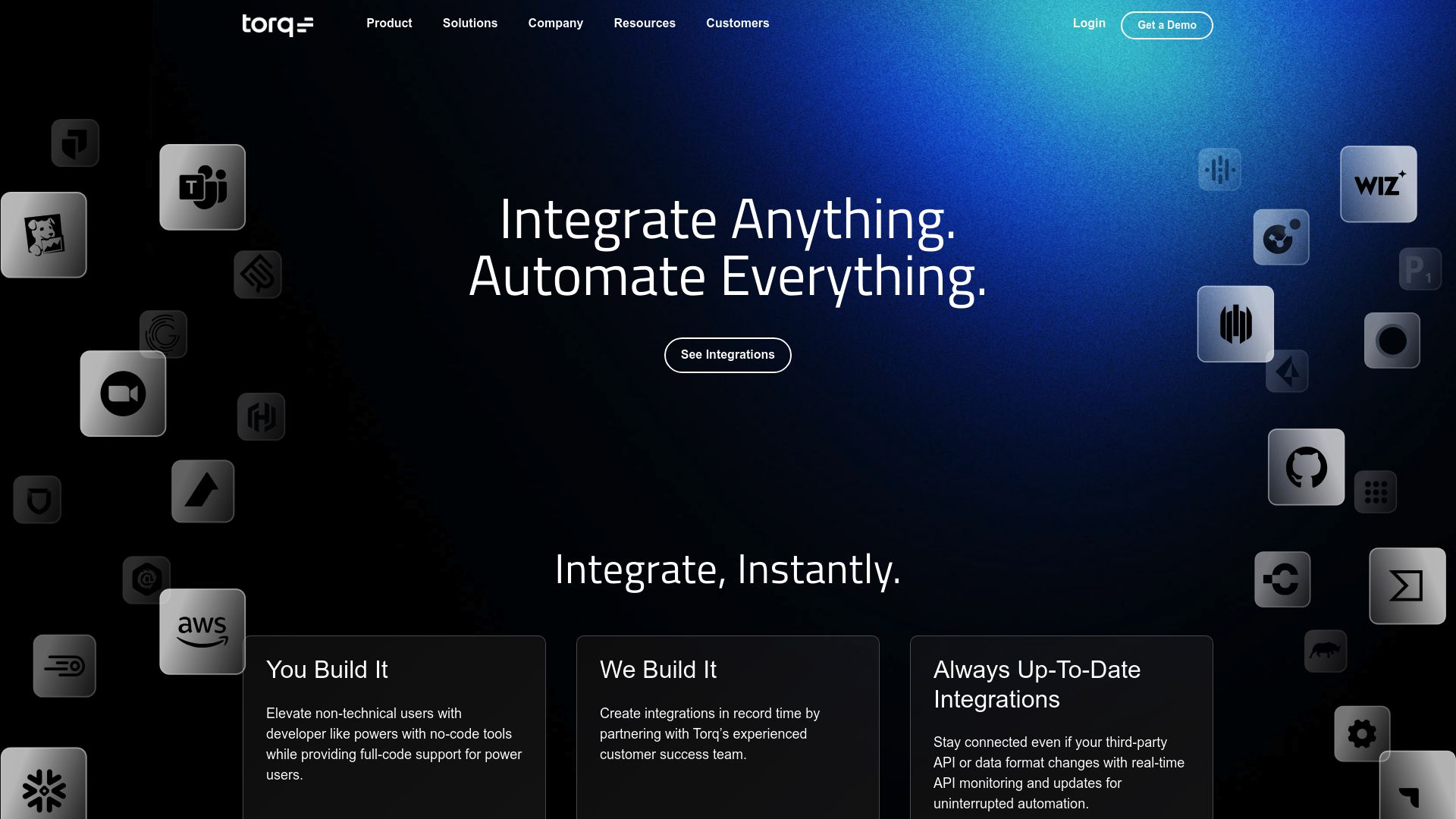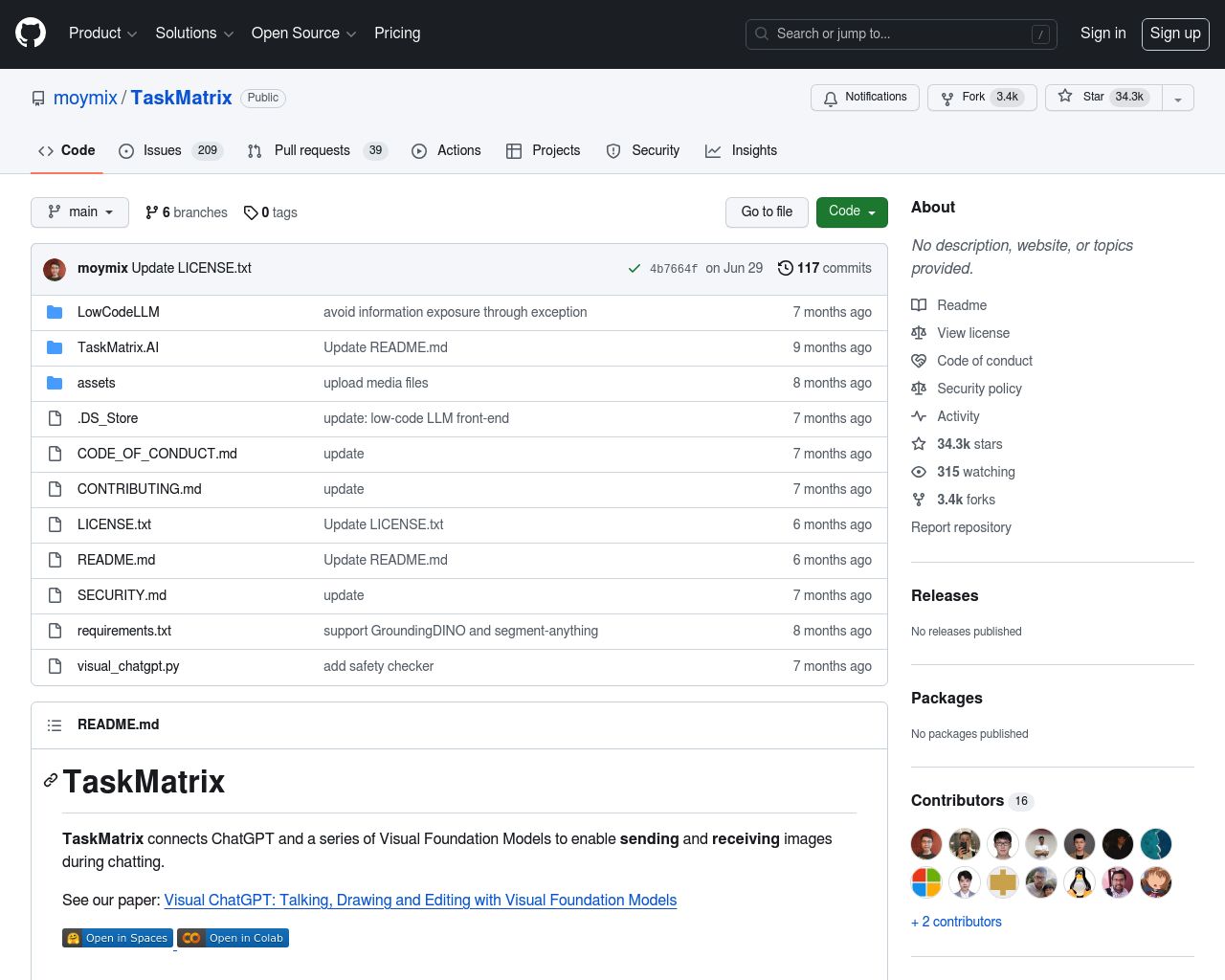Torq Hyperautomation vs. TaskMatrix: Comparing AI Automation Platforms
The demand for powerful AI solutions to streamline operations and enhance productivity continues to grow. In this comprehensive review, we compare three leading platforms: Torq Hyperautomation vs. TaskMatrix, and SmythOS. Each offers unique approaches to AI-driven automation and agent development, catering to different organizational needs. Torq Hyperautomation specializes in security-focused workflow automation, TaskMatrix excels in connecting foundation models with specialized APIs, while SmythOS provides a versatile platform for comprehensive AI agent development and deployment. This comparison will help you understand the strengths and limitations of each solution, enabling you to make an informed decision based on your specific requirements for AI integration and automation.
Torq Hyperautomation Overview
Torq Hyperautomation delivers a powerful security automation platform for enterprise-grade organizations. The software streamlines security operations through AI-driven hyperautomation, enabling teams to respond swiftly to threats and orchestrate complex security processes at scale.


Torq’s platform excels in workflow automation, offering a visual designer that allows security professionals to create sophisticated processes without coding. Users can leverage extensive integrations with third-party services, API-based steps, and scripting capabilities to build comprehensive security workflows. The system supports various trigger mechanisms, including events from external services, user actions, and scheduled tasks, ensuring timely execution of critical security measures.
Torq’s platform excels in workflow automation, offering a visual designer that allows security professionals to create sophisticated processes without coding.
Key features include customizable workflows, robust case management, and flexible workspace management with role-based access control. These elements combine to enhance collaboration and streamline resource sharing within security teams. Torq’s focus on hyperautomation aims to free up security professionals from routine tasks, allowing them to concentrate on strategic initiatives.
While Torq Hyperautomation offers significant advantages in security automation, it may not be the ideal solution for organizations seeking general-purpose AI agents or those requiring extensive AI-driven decision-making capabilities. The platform’s strength lies in its security-specific features and integrations, which may limit its applicability in non-security domains.
Torq integrates seamlessly with existing security infrastructure, connecting various tools and systems to create a cohesive security ecosystem. This integration capability positions Torq as a central hub for security operations, enabling organizations to unify their security efforts and respond more effectively to threats.
In the competitive landscape of security automation platforms, Torq Hyperautomation stands out for its focus on enterprise-grade solutions and its comprehensive approach to security workflow automation. While it may not offer the breadth of AI capabilities found in some general-purpose platforms, its specialized features make it a strong contender for organizations prioritizing advanced security automation and orchestration.
TaskMatrix Overview
TaskMatrix.AI revolutionizes AI integration by connecting powerful foundation models with specialized APIs. Developed by Microsoft, this open-source platform enhances general-purpose AI like GPT-4 to perform a wide range of tasks efficiently.
The system functions as an advanced project manager, bridging diverse AI models through a sophisticated ecosystem. TaskMatrix.AI’s unique architecture includes a conversational foundation model, comprehensive API platform, intelligent API selector, and action executor. This combination allows it to understand complex user instructions, generate executable code, and perform tasks using the most appropriate APIs.
TaskMatrix.AI revolutionizes AI integration by connecting powerful foundation models with specialized APIs. Developed by Microsoft, this open-source platform enhances general-purpose AI like GPT-4 to perform a wide range of tasks efficiently.
TaskMatrix.AI excels in both digital and physical task execution, offering lifelong learning capabilities and interpretable responses. Its modular design and extensive API repository make it a versatile tool for developers and businesses integrating advanced AI into their operations. The platform supports custom AI model creation, provides pre-trained models and API connectors, and offers an extensive resource library for AI solution development.


While TaskMatrix.AI offers powerful capabilities, it lacks some features present in more comprehensive AI agent builders. It doesn’t provide hosted agents, environments for development and production, or a visual builder for no-code development. The platform also doesn’t support autonomous agents or multi-agent collaboration, which limits its applicability in certain scenarios.
TaskMatrix.AI’s strengths lie in its problem-solving capabilities, integration with various APIs, and its foundation in Microsoft’s robust technology stack. However, users seeking a more complete AI agent development environment with visual tools and hosted solutions might find the platform’s offerings limited compared to alternatives in the market.
Feature Comparison
Torq Hyperautomation and TaskMatrix each offer distinct approaches to AI-driven automation, with notable differences in their core components and security features. Torq excels in security-focused workflow automation, providing robust tools for orchestrating complex security processes. Its visual workflow designer enables security professionals to create sophisticated automated responses without coding. In contrast, TaskMatrix specializes in connecting foundation models with specialized APIs, offering a more flexible approach to general AI task execution.
Torq’s strength lies in its comprehensive security features, including detailed execution logs, role-based access control, and integration with various security tools. However, it lacks some of the advanced AI capabilities found in TaskMatrix, such as the ability to understand and execute complex, open-ended tasks using natural language processing.
TaskMatrix shines in its problem-solving capabilities and flexibility, leveraging powerful foundation models to interpret user instructions and generate executable code. Yet, it falls short in providing hosted agent environments and visual building tools, which Torq offers for streamlined development and deployment.
While both platforms support API integrations, Torq’s focus on security-specific APIs contrasts with TaskMatrix’s broader approach to connecting with diverse specialized models. Torq provides more robust options for deploying automation as APIs and webhooks, whereas TaskMatrix excels in generating and executing code for a wide range of tasks.
Neither platform fully matches SmythOS’s comprehensive feature set, which combines the strengths of both systems. SmythOS offers hosted agents, visual building tools, and extensive AI capabilities, alongside robust security features and flexible deployment options. This makes SmythOS a more versatile choice for organizations seeking a balance between security automation and general-purpose AI agent development.
Feature Comparison Table
| Torq Hyperautomation | TaskMatrix | SmythOS | |
|---|---|---|---|
| CORE FEATURES | |||
| Explainability & Transparency | ❌ | ✅ | ✅ |
| Problem-Solving Capabilities | ❌ | ✅ | ✅ |
| Human-AI Interaction | ❌ | ✅ | ✅ |
| SECURITY | |||
| COMPONENTS | |||
| Huggingface AIs | ❌ | ✅ | ✅ |
| Zapier APIs | ❌ | ✅ | ✅ |
| All other APIs, RPA | ❌ | ✅ | ✅ |
| Logic | ❌ | ✅ | ✅ |
| Data Lakes | ✅ | ❌ | ✅ |
| DEPLOYMENT OPTIONS (EMBODIMENTS) | |||
| Deploy as API | ❌ | ✅ | ✅ |
| Production Domains | ❌ | ✅ | ✅ |
| API Authentication (OAuth + Key) | ❌ | ✅ | ✅ |
| Deploy as Scheduled Agent | ❌ | ✅ | ✅ |
| Scalability | ❌ | ✅ | ✅ |
| DATA LAKE SUPPORT | |||
| Hosted Vector Database | ✅ | ❌ | ✅ |
| Sitemap Crawler | ❌ | ❌ | ✅ |
| YouTube Transcript Crawler | ❌ | ❌ | ✅ |
| URL Crawler | ❌ | ✅ | ✅ |
| PDF Support | ❌ | ✅ | ✅ |
Best Alternative to Torq Hyperautomation and TaskMatrix
SmythOS emerges as the superior alternative to Torq Hyperautomation and TaskMatrix, offering a comprehensive platform for AI agent development and deployment. Our solution combines the strengths of both competitors while addressing their limitations, providing users with a versatile and powerful toolset for creating intelligent automation solutions.
Unlike Torq’s narrow focus on security workflows or TaskMatrix’s emphasis on connecting foundation models, SmythOS delivers a complete ecosystem for building and managing AI agents across diverse use cases. We offer hosted environments for both development and production, ensuring seamless deployment and scalability. Our visual builder and no-code options democratize AI development, allowing users of all skill levels to create sophisticated agents without extensive programming knowledge.
SmythOS delivers a complete ecosystem for building and managing AI agents across diverse use cases… ensuring seamless deployment and scalability.
SmythOS excels in providing robust memory and context management, enabling agents to maintain coherent interactions and learn from past experiences. This capability, combined with our support for autonomous agents and multi-agent collaboration, allows for the creation of complex, intelligent systems that can tackle a wide range of tasks. We also prioritize explainability and transparency, offering powerful debugging tools that give users insight into their agents’ decision-making processes.
Our platform stands out with its extensive integration capabilities, supporting a vast array of APIs, AI models, and data sources. From Hugging Face models to Zapier integrations, SmythOS provides the flexibility to connect with virtually any service or data lake. This versatility, coupled with our advanced deployment options—including API endpoints, webhooks, and scheduled agents—ensures that SmythOS can adapt to any business requirement or technical environment.
By choosing SmythOS, users gain access to a feature-rich platform that combines ease of use with powerful AI capabilities, enabling them to create, deploy, and manage intelligent agents more efficiently than ever before. Our solution not only meets the current demands of AI automation but also positions users at the forefront of future developments in this rapidly evolving field.
Conclusion
Torq Hyperautomation and TaskMatrix offer powerful capabilities for security automation and AI task execution respectively, but SmythOS emerges as the superior choice for organizations seeking a comprehensive AI agent development and deployment platform.
Torq excels in security-focused workflow automation, providing robust tools for orchestrating complex processes without coding. Its visual designer and extensive integrations make it ideal for security teams. TaskMatrix shines in connecting foundation models with specialized APIs, offering flexibility for general AI tasks and problem-solving.
However, SmythOS combines the strengths of both platforms while addressing their limitations. We offer hosted agents, visual building tools, and extensive AI capabilities alongside robust security features and flexible deployment options. Our platform supports multimodal interactions, problem-solving, data lake integration, and scalable embodiments like APIs and chatbots.
For organizations looking to harness the full potential of AI agents, SmythOS provides unmatched versatility and ease of use. Whether you’re a developer seeking advanced customization or a business user needing no-code solutions, our platform adapts to your needs. Explore our diverse range of AI-powered agent templates to jumpstart your projects or create a free SmythOS account to experience the future of AI automation firsthand.
Last updated:
Disclaimer: The information presented in this article is for general informational purposes only and is provided as is. While we strive to keep the content up-to-date and accurate, we make no representations or warranties of any kind, express or implied, about the completeness, accuracy, reliability, suitability, or availability of the information contained in this article.
Any reliance you place on such information is strictly at your own risk. We reserve the right to make additions, deletions, or modifications to the contents of this article at any time without prior notice.
In no event will we be liable for any loss or damage including without limitation, indirect or consequential loss or damage, or any loss or damage whatsoever arising from loss of data, profits, or any other loss not specified herein arising out of, or in connection with, the use of this article.
Despite our best efforts, this article may contain oversights, errors, or omissions. If you notice any inaccuracies or have concerns about the content, please report them through our content feedback form. Your input helps us maintain the quality and reliability of our information.
